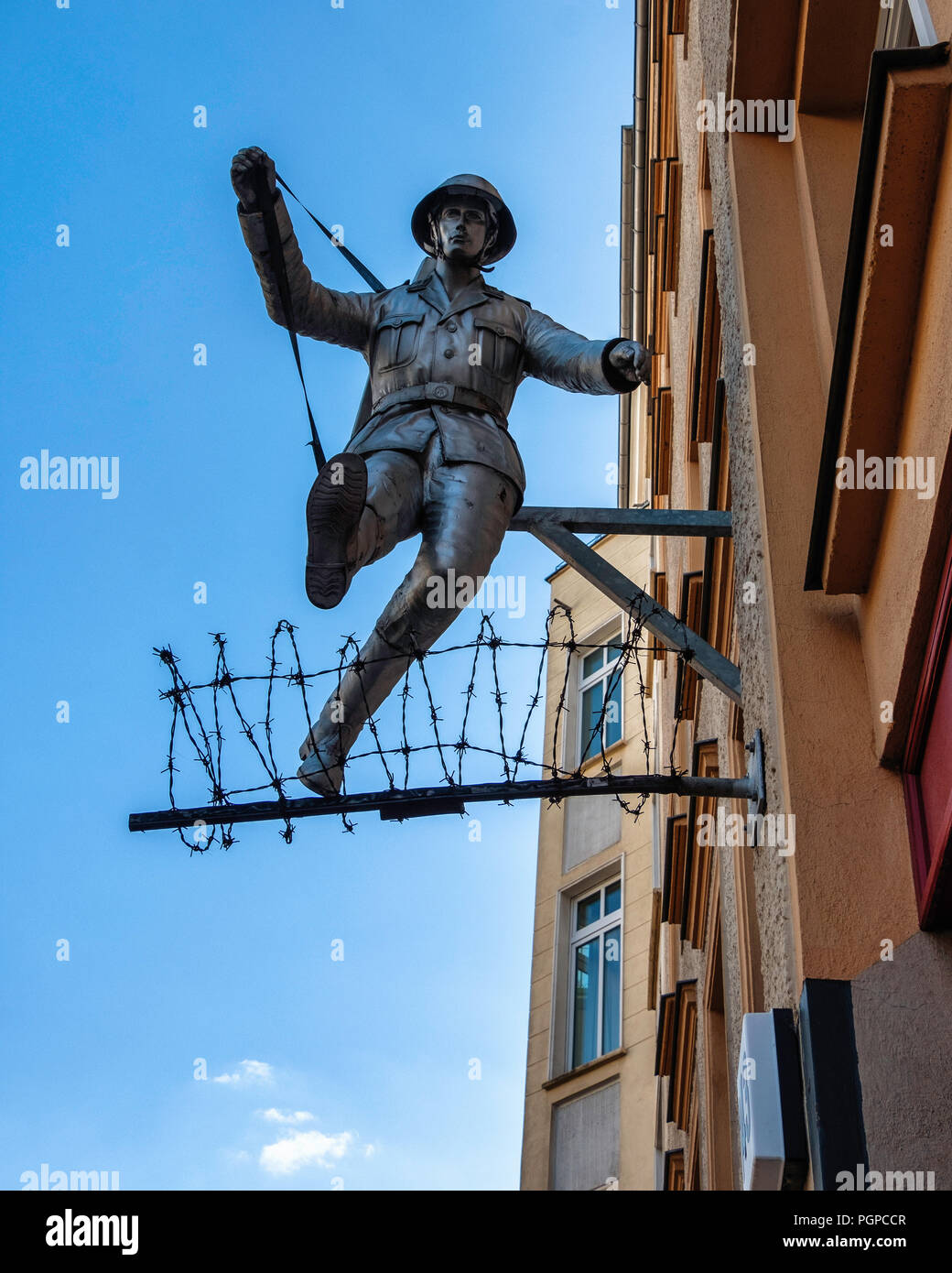

Often, “Wall Jumpers” overcame the border in order to demonstrate bravery, impress their girlfriend, or were intoxicated. The motives for crossing the wall were different. More than 5,000 people managed to escape through the Wall, with an estimated death toll of 136. West Berliners look over the border at loved ones left behind in East Berlin.ĭuring the 28 years that the Berlin Wall stood, more than 60,000 attempts to get across it were made, many of which caused injury. The population of Germany did not want to put up with the fact that Germany was divided into two parts, which is why they were not afraid to violate its inner borders. After 1952, the border became carefully guarded, and a wave of emigration focused on Berlin, which was open to movement before the construction of the wall began. Heavily guarded East German construction workers demolish train tracks leading into West Berlin at Wornholmer Strasse.Īfter the authorities of the GDR began to create a system of socialism, many people began to cross the border in order to find a place of residence in the Federal Republic of Germany since the standard of living there was much better. The construction of border facilities began, which were eventually called the Berlin Wall. The citizens of the GDR took advantage of this opportunity and began mass exoduses through Berlin to the “free world.”įor this reason, GDR authorities decided to take away the ability to move freely across Berlin and leave. On the night of August 12-13, 1961, East Germany began to seal all passages to West Berlin. Ī sculpture called Mauerspringer (Walljumper) by Florian and Michael Brauer and Edward Anders, could be seen close to the site of the defection, but has been removed since then (Bernauer Straße).After the construction of the border between the Federal Republic of Germany and the GDR, Berlin remained the last place for unhindered crossing of the border. In May 2011, the photograph of Schumann's "leap into freedom" was inducted into the UNESCO Memory of the World programme as part of a collection of documents on the fall of the Berlin Wall. On 20 June 1998, suffering from depression, he committed suicide, hanging himself in his orchard near the town of Kipfenberg in Upper Bavaria. Sculpture called Mauerspringer (Walljumper) by Florian and Michael Brauer and Edward AndersĪfter the fall of the Berlin Wall he said, "Only since 9 November 1989 have I felt truly free." Even so, he continued to feel more at home in Bavaria than in his birthplace, citing old frictions with his former colleagues, and was even hesitant to visit his parents and siblings in Saxony. He met his wife Kunigunde in the town of Günzburg.

Schumann was later permitted to travel from West Berlin to the main territory of West Germany, where he settled in Bavaria. The scene, including Schumann's preparations, has also been filmed on 16-mm film from the same perspective. His picture has since become an iconic image of the Cold War era. West German photographer Peter Leibing photographed Schumann's escape. Schumann jumped over the barbed wire fence and was promptly driven away from the scene by the West Berlin police. From the other side, West Germans shouted to him, " Komm' rüber!" ("Come over!"), and a police van pulled up to wait for him. At that time, the wall was only a low barbed wire fence. On 15 August 1961, Schumann was sent to the corner of Ruppiner Straße and Bernauer Straße to guard the Berlin Wall on its third day of construction.

After three months' training in Dresden, he was posted to a non-commissioned officers' college in Potsdam, after which he volunteered for service in Berlin. Born in Zschochau, Schumann served as a soldier in the East German Bereitschaftspolizei.


 0 kommentar(er)
0 kommentar(er)
